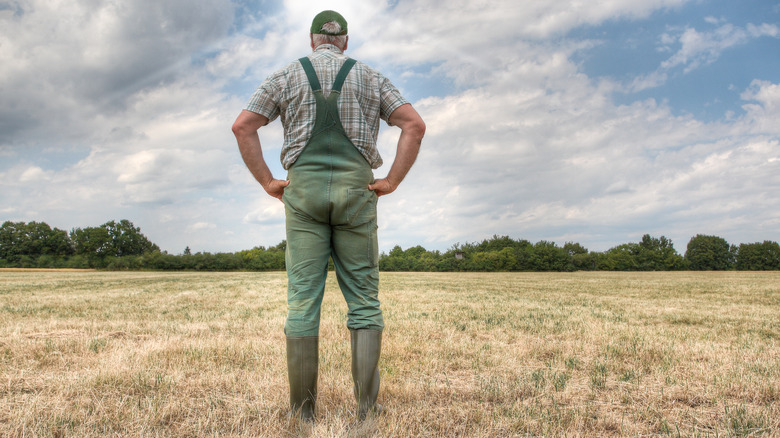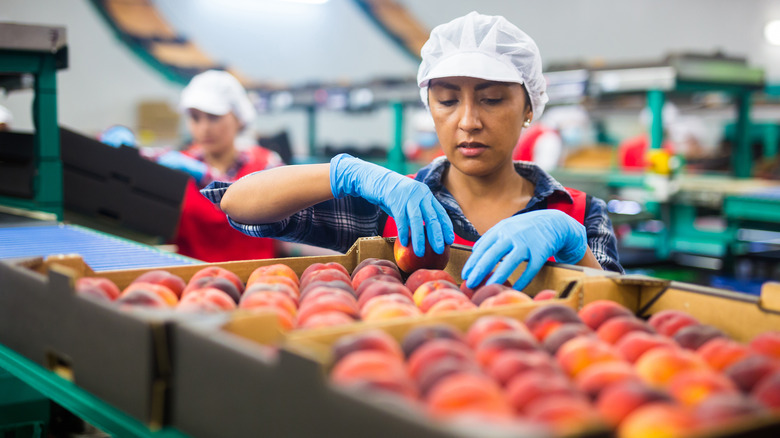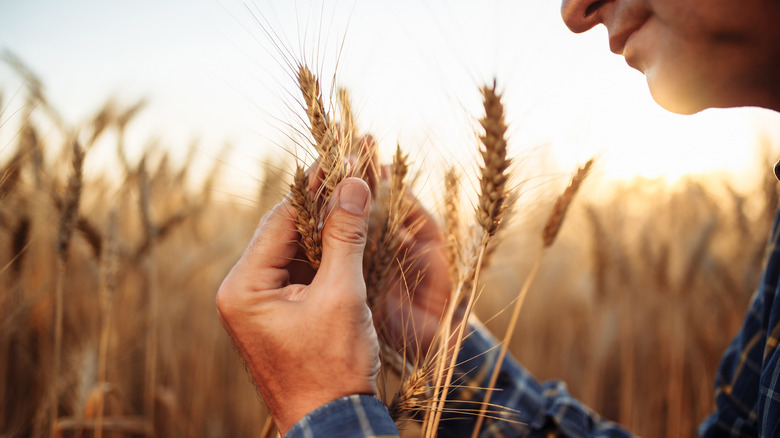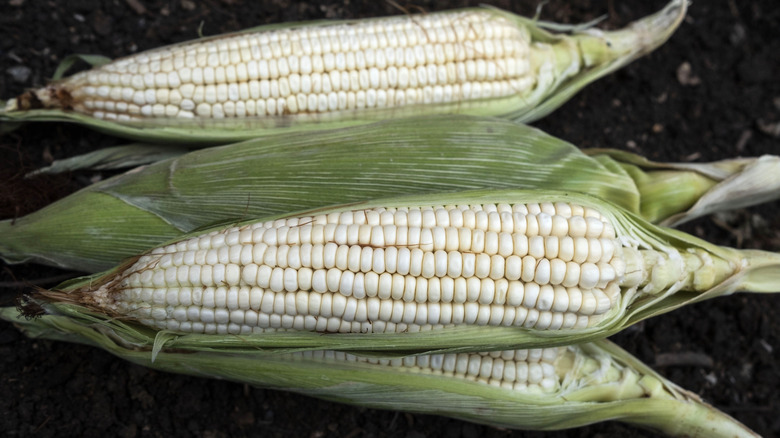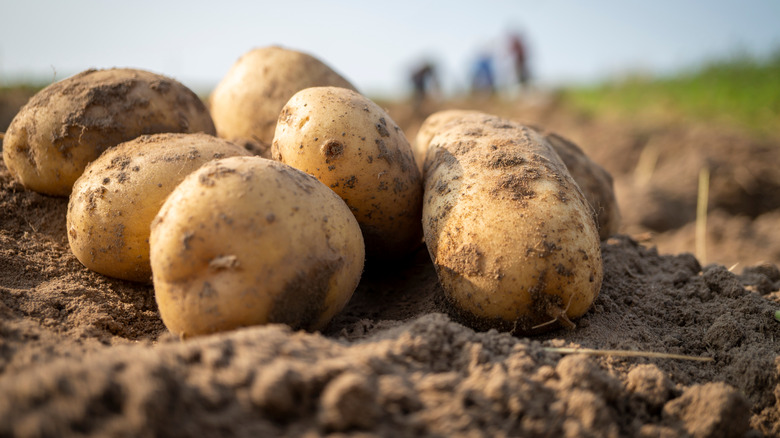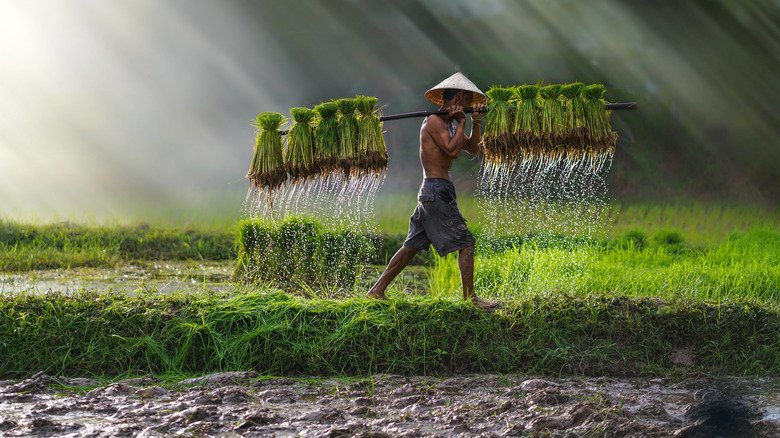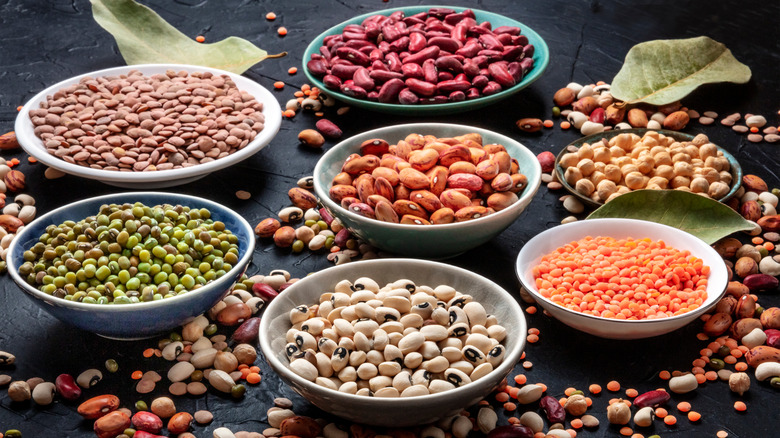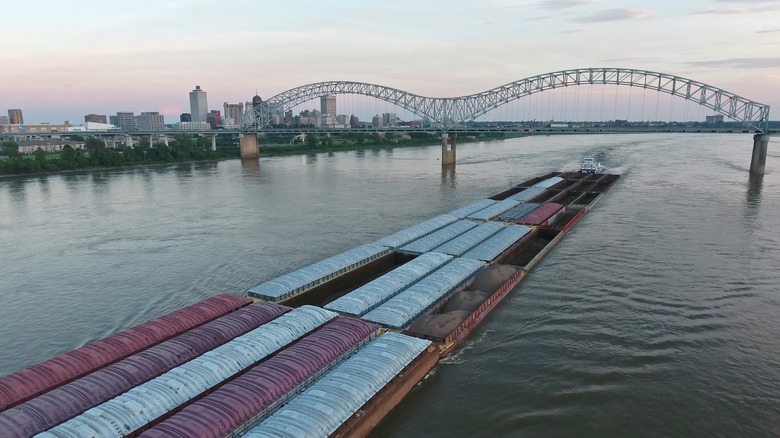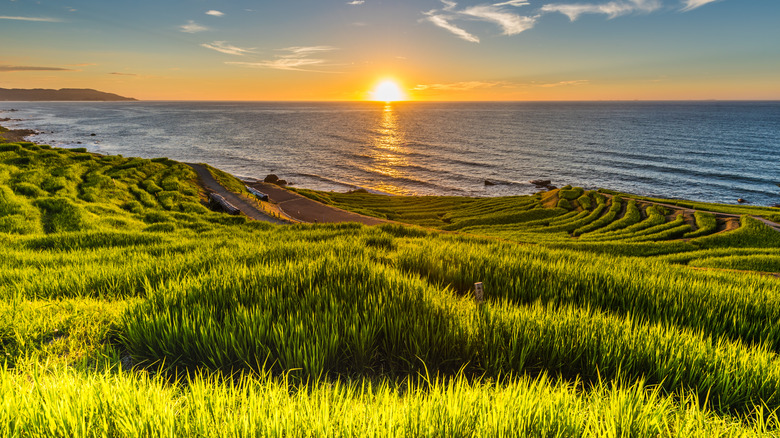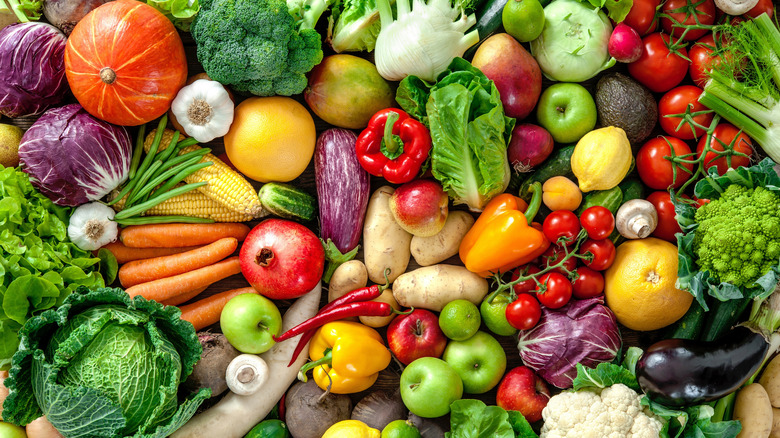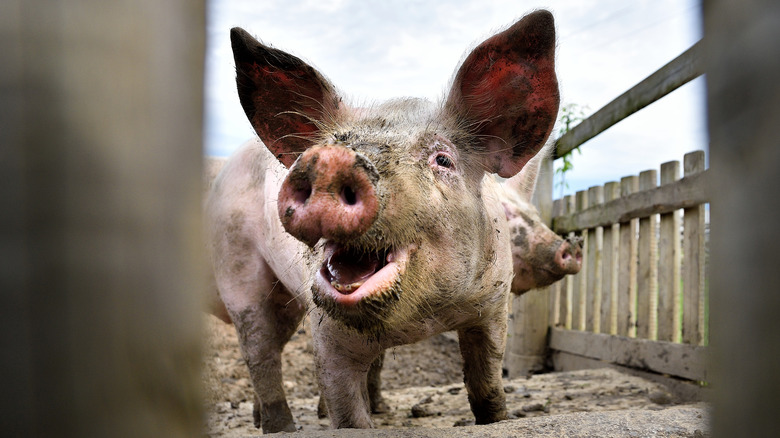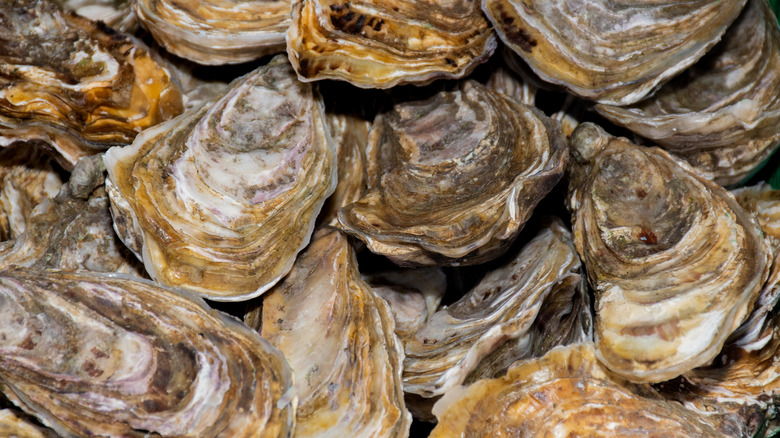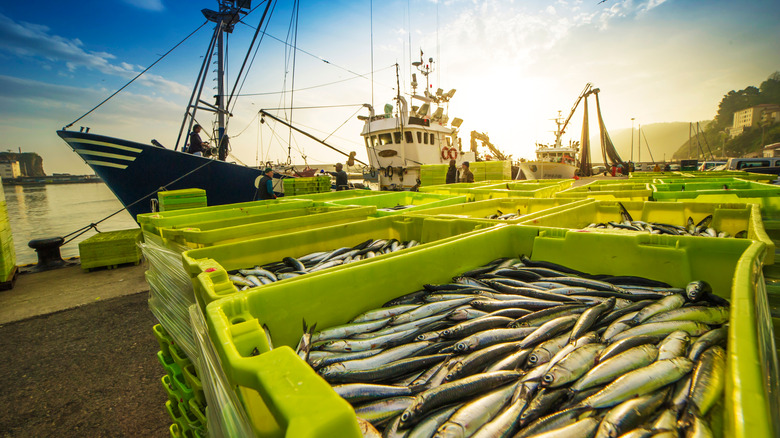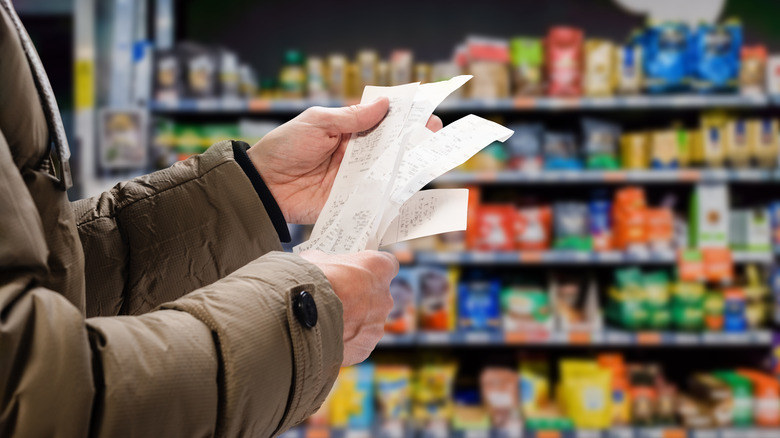How Climate Change Will Actually Affect The US Food Supply
When it comes to climate change, we Americans have a knack for pretending like everything's A-okay. Heatwave? That's just nature's way of saying "hit the beach." Violent flooding? We needed the rain anyway. Cold snap? It clearly means global warming is not a thing.
Well, folks, according to the Intergovernmental Panel on Climate Change, climate change is about to get even more real, and it's looking to intensify within the next few decades. When it finally lets us know it's not messing around anymore, we will feel it personally, not only in the weather but in our bellies. Scientists are now reporting that climate change will affect global food supplies drastically, similar to swallowed up coastlines or the release of terrifying pathogens from deep within the not-so-permafrost, which is what The European Space Agency warns.
According to the IPCC'S special report, small farmers in lower-income nations will feel it first. For a while, western nations might be okay, though the IPCC notes we'll undoubtedly see price increases and shortages of certain foods, some of which we'll be able to find substitutes for — but many of which won't be replaceable. Let's not mince words. In the long run, climate change is going to be bad. How bad? Well, maybe you'd better start stocking the pantry.
Food production already has problems of scale
Before we talk about what global food supply could look like if the climate continues to warm, let's first consider that we would need to increase food production worldwide, even without climate change.
According to The University of Montana's Environment Reports, humans are not increasing and distributing global food production enough to keep up with population growth — and this is before climate change is considered a factor. In fact, experts from this report predict we could see global food shortages starting as soon as 2050 if we cannot find a way to double crop production from 2005 levels. Some of the reasons for this imbalance are very simple: The more people there are, the more water is consumed or polluted, and the less water remains for irrigating agriculture. Also, the food supply is not distributed equitably, and (most of) it isn't carbon neutral.
This problem becomes compounding when you throw climate change into the mix. Global warming considered, the University of Montana's Environment Reports shows that growing the food supply to the needed level can't be done without causing a catastrophe if we continue adding to our carbon footprint. It's not just a matter of getting carbon emissions under control; It's also a matter of fixing food production issues in general. So far, we're still working towards good solutions for either one of those things.
Some farmers might benefit from climate change ... at first
If you have ever spent more than a few minutes pondering what climate change might mean, you've probably wondered why it won't just balance itself out. After all, if it becomes impossible to grow wheat in North Carolina, why can't we grow it in Canada instead? If North Carolina is getting warmer, Canada will get warmer too, and eventually, the perfect wheat-growing climate has just moved to some other landscape. Problem solved.
There is a grain of truth to that (har, har). Some farmers will benefit from climate change because it will become possible for them to grow certain crops they wouldn't have been able to, allowing them to diversify their harvests (via National Geographic). According to Woodwell Climate, though, this is only a partial solution. Just because the climate is suitable in another part of the world doesn't necessarily mean the soil conditions are correct. Plus, much of this new "suitable" farmland isn't going to be farmland at all. The land might already be covered with housing developments or other industries, so converting those places to farmland would be difficult, expensive, and maybe even impossible. Even land that hasn't been developed would have to be deforested to become farmland, and according to The World Wildlife Fund, there is plenty of evidence that deforestation makes climate change worse.
Climate change will affect corn
Do you like a nice buttery cob of corn on a summer evening? How about chips and salsa with beef (or chicken) tacos? How about candy? Jams and jellies? Coca-Cola?
Corn is in everything. Well, not literally everything, but it isn't just the stuff you put on the barbecue in the summertime. Corn is used to feed livestock, poultry, and pigs, and it's also used to sweeten the junk food that we Americans enjoy so much. Now, you can argue all day about whether less corn in the American diet would be good or bad. Consider it this way: When you depend on something that much, and it is taken away from you, it could be a significant, expensive effort to find something else to serve as an adequate substitute.
According to a 2021 NASA study, if we fail to halt global climate change, corn production is projected to decrease as much as 24%, and we may start to notice the impact as early as 2030. NASA expects this will happen primarily because the higher temperatures in "breadbasket" areas will put more stress on plants, decreasing their output.
A decrease in corn production might be offset by wheat, which the study suggested could enjoy a 17% increase in yields as it becomes possible to grow the crop in new places. You might think this is great info if you like sourdough, but it's stormy news if you're gluten-free. You might not always be able to substitute corn tortillas for flour.
Potatoes ... oh no
Okay, so maybe you can live without corn, but who can live without potatoes? Whether mashed, baked, fried, or as a chip, potatoes are beloved by the masses (though we have some debates about whether sweet potatoes should be considered an acceptable substitute).
Anyway, the good news is that potatoes are pretty adaptable. They're one of the few garden crops that just about anyone can grow, whether you live in zone 3 or zone 10 (per The Spruce Eats). But according to the International Potato Center, one thing potatoes have trouble with is high nighttime temperatures — if the mercury remains in or above the high range of 70 degrees Fahrenheit, potatoes start suffering from problems like slow growth and early sprouting. These conditions mean that growers may have to move their crops to higher latitudes or altitudes. However, the International Potato Center seems optimistic about developing heat-resistant potatoes that would make such drastic measures unnecessary.
The University of Maine has successfully produced some of these cultivars, as reported by NBC News. That's great for us potato-loving Americans, who consumed around 31 pounds of potato per capita in 2020 alone. It may be even better for invested producers. For the University of Maine, their cultivars have helped the state become the 8th largest potato producer in the country. As for the International Potato Center, they believe that when other crops fail, the humble tuber will provide for the world's hungry like nothing else can. The excitement over potato's potential (at the decline of other foodstuffs) definitely has nothing to do with the money, though. Definitely not.
Rice ... oh no, again
Rice is a water-intensive crop. In fact, according to Oregon Live, rice is the most water-hungry crop currently grown in the breadbasket state of California. Though, to be fair, the 5.1 acre-feet of water that rice production requires isn't much greater than it takes to grow alfalfa. Still, in California alone, Oregon Live reports that rice farmers use around 2.8 million acre-feet of water a year, which amounts to about 6% of the state's total water consumption.
Water is already a scarce commodity in California, which has been in a drought state for roughly the last 22 years (via The Mercury News). Naturally, drought hits water-hungry rice harder than most crops. According to a study in the International Journal of Environmental Research and Public Health, rice yields tend to drop by large percentages under various stresses that happen during drought years.
Chinese food, sushi, Thai, Indian, Italian risotto — the impacts of a decline in rice availability will be bad for your many favorite cuisines. It could make rice harder to find or more expensive in the grocery store. Rice is an important staple food for roughly half the world's population, so significant decreases in yields are likely to leave many people with empty stomachs. These kinds of scarcities are already becoming commonplace in parts of the world. In Africa, for example, extreme drought is affecting the continent's rainfed rice crops, which make up 78% of the total rice production area (per African Journal of Agricultural Research).
Putting crop yields into perspective
Staple crops are obviously the most significant concern for climate change and the U.S. food system because they feed the most people. A major hit to wheat, corn, rice, or soybeans might trigger a worldwide famine or, at best, cause skyrocketing prices and the end of quick, inexpensive favorites like Panda Express and Chipotle Mexican Grill.
Crop yield is closely tied to temperature increases. According to the Proceedings of the National Academy of Sciences, for every 1 degree Celsius in global temperature rise, we can expect yields of all of the major staple crops (including corn, wheat, rice, and soybeans) to decrease by between 3 and 8%.
Staple crops aren't the only crops we depend on, though. We also like our vegetables, beans and legumes, and fruits (some of us do, anyway). Another report by the Proceedings of the National Academy of Sciences estimated that a 4 degree Celsius increase in temperatures would cause vegetable and legume yield to fall by 41.4% and 21.5%, respectively. A 50% reduction in water availability could also have a considerable impact, lowering vegetable yields by 44.6% and legume yields by 24.9%. Hey, at least now when your mom tells you to eat your vegetables, you won't have to — you can't eat them if there aren't any.
Climate change will also mess up supply chains
It's not just about how much food can be grown, though. It's also about how we transport food. COVID-19 taught us many lessons, one of the biggest being what happens when supply chains get disrupted. When supply chain issues get in the way of our ability to move food from one part of the world to another, that's a much bigger problem. Perishable foods like beef, chicken, vegetables, and fruits can't sit around in warehouses, docks, stalled trucks, or immobile barges for much more than a few days or weeks for some products. After that, spoilage becomes a real problem.
According to the Property and Environment Research Center, a 2012 drought affected water levels in the Mississippi River, reducing barge traffic and leading to significant losses. Complications from a flood that happened the following year and record-low water again disrupted transportation on the Mississippi in 2013 (via Reuters). Reports in Global Food Security suggest that rising temperatures will likely cause heat stress to livestock during transport, leading to more animal deaths or limiting the time of year livestock can be moved. These kinds of problems mean that climate change will not only reduce food yields, it will also diminish the amount of good food that makes it into supermarkets and onto our tables.
Rising seas could flood coastal farmland
Asia has a lot of productive farmland in coastal areas. You don't have to understand geography to know why this is a problem. As sea levels rise, the ocean will reclaim a lot of coastal areas. Oceanside land in Southeast Asia is already being swallowed up by the sea or flooded for parts of the year. Unfortunately, you can't grow rice in saltwater.
A 2016 study published in the Journal of Geographical Sciences estimated the impact of sea-level rise on the Pearl River Delta region on the Coast of China and found that there will be a gradual increase in the proportion of submerged farmlands between 2030 and 2100. The biggest losses will happen on vegetable farms, followed by rice and peanut farms. The authors suggested sea walls and sea gates as possible protective measures against storm surges, which sounds like a grim way to say "The world won't manage to stop this from happening."
The loss of Asian farmlands isn't just going to impact people locally. The United States imports about 11% of its rice from Asian nations, including China, Thailand, India, and Pakistan (via USDA). So, the loss of that farmland means we'll have to start looking elsewhere for our basmati and jasmine rice. The Howard Center of Investigative Journalism tells us that coastal growers in the U.S. are already facing similar problems to Asia, with states like North Carolina, Maryland, and California suffering crop losses from seasonally flooded fields.
What food we do have could become less nutritious
Your mom told you to eat your vegetables because she understood the universal truths of plant consumption. Vegetables contain nutrients that our bodies need, some of which can't be obtained from animal products. So, as much as you'd probably like to eat nothing besides steak and lobster, you should have a salad or some steamed broccoli on the side or, you know, scurvy.
Unfortunately, climate change is going to do more than just make fresh vegetables harder to come by. It's also going to make the fresh vegetables you can get less nutritious. According to the Ohio State's College of Food, Agricultural, and Environmental Sciences, plants may actually grow faster in the presence of higher levels of atmospheric CO2, yet that's not necessarily a good thing. This is largely due to the natural way plants grow — they build starch and sugar first, and then later in the process they start adding the good stuff, like protein, antioxidants, and fats. Plants create these nutrients when they're under duress, but high levels of CO2 can make many vegetable varieties feel less stressed, according to the College of Food. When that happens, they grow faster and bigger without containing as many of those important nutrients. Another study in Fronteirs in Marine Science suggests that as oceans acidify, available nutrients from seafood may also diminish.
Parasites could become more common
You've probably heard the frightening news that as the climate warms, we humans may be seeing more and more ticks, and those ticks will be more likely to have dangerous diseases (per Smithsonian Magazine). Those of us who avoid being bitten by ticks won't go totally untouched; Because of the bizarre diseases that climate change-era ticks are carrying, the way we eat meat may not ever be the same. And parasites in the wake of climate change won't just affect our capacity to eat animal products. They'll also affect animals themselves.
According to a Journal of Biology study, higher temperatures will suit parasites and pathogens that infect farm animals. Conditions will be particularly beneficial for parasites that live both inside and outside of animals because they'll support faster growth during certain life stages, and longer life. The study suggests a potential increase in the number of pathogen generations that will be born in a single year. That's right, parasite populations will increase, and what happens when parasite generations overlap? They turn each cow or pig into an animal condo so all their family members can have a place to call home. This causes livestock to have a heavy parasite load, become more susceptible to disease, or end up dead.
Journal of Biology reports that a warmer climate may also help cold-susceptible parasites survive the winter, increasing the number of months that vectors are able to spread parasites. Floods can help water-borne pathogens reproduce, and extreme temperatures can also make cattle, pigs, and chickens less able to tolerate infection.
Less grass means fewer cows
There's more bad news for cattle and grazing animals ... as the climate warms, pasture land dries up and becomes less capable of supporting the green grasses that ruminants eat (per Bloomberg). According to the USDA, there are around 95 million acres of grazing on National Forest lands (that doesn't count the grazing on private land), and as of 2015, roughly one million head of cattle were on public lands in the Southwest. The USDA information projects that suitable grazing lands will start to move north as the climate warms, while traditional grazing lands in places like Texas and Arizona will dry up.
The USDA also says there might be a change in the types of forage that grow on public rangelands. For example, woody species may move in and edge out grasses. Sometimes this can be okay as cattle will eat woody plants, but it's still problematic since they have to be taught how or be of a species that is inclined to do so. Ultimately, these variables will complicate ranching and make it unsustainable for some, if not most ranchers. As for beef eaters, Bloomberg shows that inconsistency can affect the cost of food.
Let's also keep in mind that cattle are considerable contributors to climate change, so they're at least partially responsible for their climate-related problems. Some activists propose a carbon tax on beef as high as 40% (via the New York Times), even while businesses are focus on low carbon beef. If you already balk at the cost of London broil, a chuck roast might not even be affordable by the end of the decade.
Acidic oceans could drive shellfish to extinction
Atmospheric CO2 has a negative effect on oceans, and we can see this in the fossil record (via The Guardian). In fact, past extinction events in the oceans have been linked to rising CO2. This is part of the reason why ammonites no longer swim the seas. Scientists think a massive volcanic event at the end of the Triassic (per Palaeogeography, Palaeoclimatology, Palaeoecology) caused an increase in atmospheric CO2, making the oceans more acidic and ultimately leading to the mass die-off of some ammonites and other shelled sea creatures (via Lethaia). The reason this happened is pretty straightforward: According to NOAA, shellfish need calcium carbonate to make their shells, and acidic seawater corrodes calcium carbonate, making it less abundant.
In 2019, scientists at an NOAA Fisheries Lab grew oysters in acidic water and water with a normal pH. They found that the shells of the oysters raised in the more acidic water weighed a lot less than the shells of the oysters raised in waters with normal pH. Ultimately, this means survival for shellfish like oysters, clams, and scallops may be a lot lower as atmospheric CO2 rises. If you enjoy creamy clam chowder or oysters a la Russe, you already know how expensive shellfish can be in normal times. Now, imagine how much you'll have to pay at your favorite seafood restaurant in a decade or two.
Some of our favorites could vanish forever
Are you ready for the worst news of all? Here it is: Coffee, chocolate, wine, bananas, and avocados could go completely extinct (per Euro News). Okay, maybe bananas and avocados aren't universally loved (though it's unclear how we would do banana splits or guacamole without them). Still, coffee, chocolate, and wine ... these are the things that get us up in the morning, keep us going through the day, and help us wind down at night. Without those three things, let's face it, life would be missing a lot.
Even with their legions of fans, we may not be able to save coffee, chocolate, or wine from climate change. According to Euro News, a fungus called "leaf rust" loves hot temperatures and is already wreaking havoc on coffee farms in South America. Meanwhile, the warming climate is slowly causing a contraction in the number of acres suitable for growing coffee — by 2080, available acreage might fall by as much as 65%.
Cacao beans (the primary ingredient of chocolate) are headed towards a similar fate. According to Euro News, even a modest increase in temperatures would significantly reduce the number of cacao-growing areas. As for the problem with wine? Grapes need to be grown in particular conditions. Otherwise, the wine created from them won't have the characteristic fruity, oaky, or tannic qualities of a specific region. Furthermore, winemaking regions could shrink by up to 56% with just 2 degrees Celcius of warming temperatures.
The fishing industry might need to redefine itself
The fishing industry is used to ups and downs, but the downs are likely to become bigger and longer as the climate warms. Fish don't appreciate major changes in their environment, especially when it comes to temperature. According to Mongabay, warming temperatures will drive what remains of the Earth's commercial fish species towards cooler waters at the poles. This migration is going to happen sooner than you think. A Global Change Biology study estimates that 23% of the world's fish will have moved on to new waters by 2030. On the surface, this might not seem like a huge problem. But, there is a real issue here. Fish will cross human-made lines that give certain people rights to fish in certain waters while excluding others from doing the same. This could potentially lead to conflict over who has the right to harvest what and where.
For some fisheries, the permanent migration of certain species may balance itself out — as one species goes north, Mongabay writes that other fish species may move to the Equator, swapping places. However, in the tropics, the fishing industry might not be so lucky. In these places, the species moving in to replace the ones that swam away may be under intense heat pressure as early as 2033, which means entire local industries could die off as the fish disappear. It isn't just the industry that would suffer. In many tropical nations, fishing feeds the locals, too.
Food prices will probably skyrocket
If you're fortunate enough to live in privileged areas, things might not be so bad for you. According to CBS News, the places that will be hit hardest are the regions receiving an unequal distribution of global wealth, like North Africa, where many people are subsistence farmers. Widespread drought will not only create a shortage of drinking water, but it will also make it impossible for these small-scale farmers to feed themselves and their families.
Famine could also trigger a dangerous global security problem. Hungry people are desperate people. In other words, people wouldn't just starve. As Reuters reports, food insecurity is likely to lead to violence and unrest across the entire planet.
When it comes to climate change and food supply, the best we can hope for is a moderate increase in price, while the worst is a total lack of available food. According to Northwestern University, unpredictable growing seasons, yield reductions, and extreme weather could make food a scarce and therefore more expensive commodity. If you're a middle-income person in America, maybe you'll just grumble at the price of that basket of groceries. Your dining habits may change to support eating cheaper staples or skipping the meat. If you're lucky, you won't go hungry. Climate change is all about uncertainty, and though science has predictions, we don't yet know what the food supply will look like in 20 or 50 years. The best we can hope for is still having groceries on the shelves.
